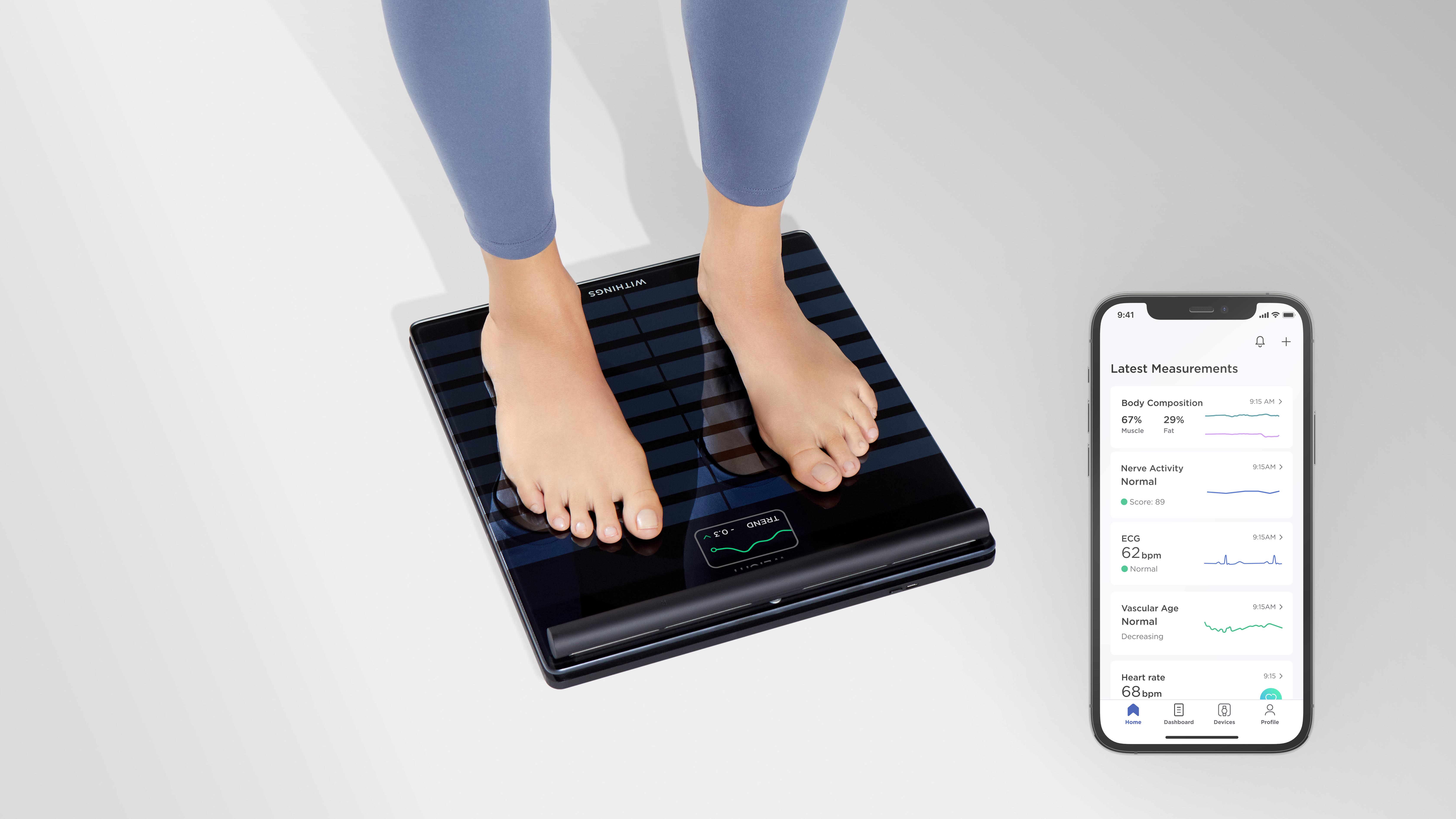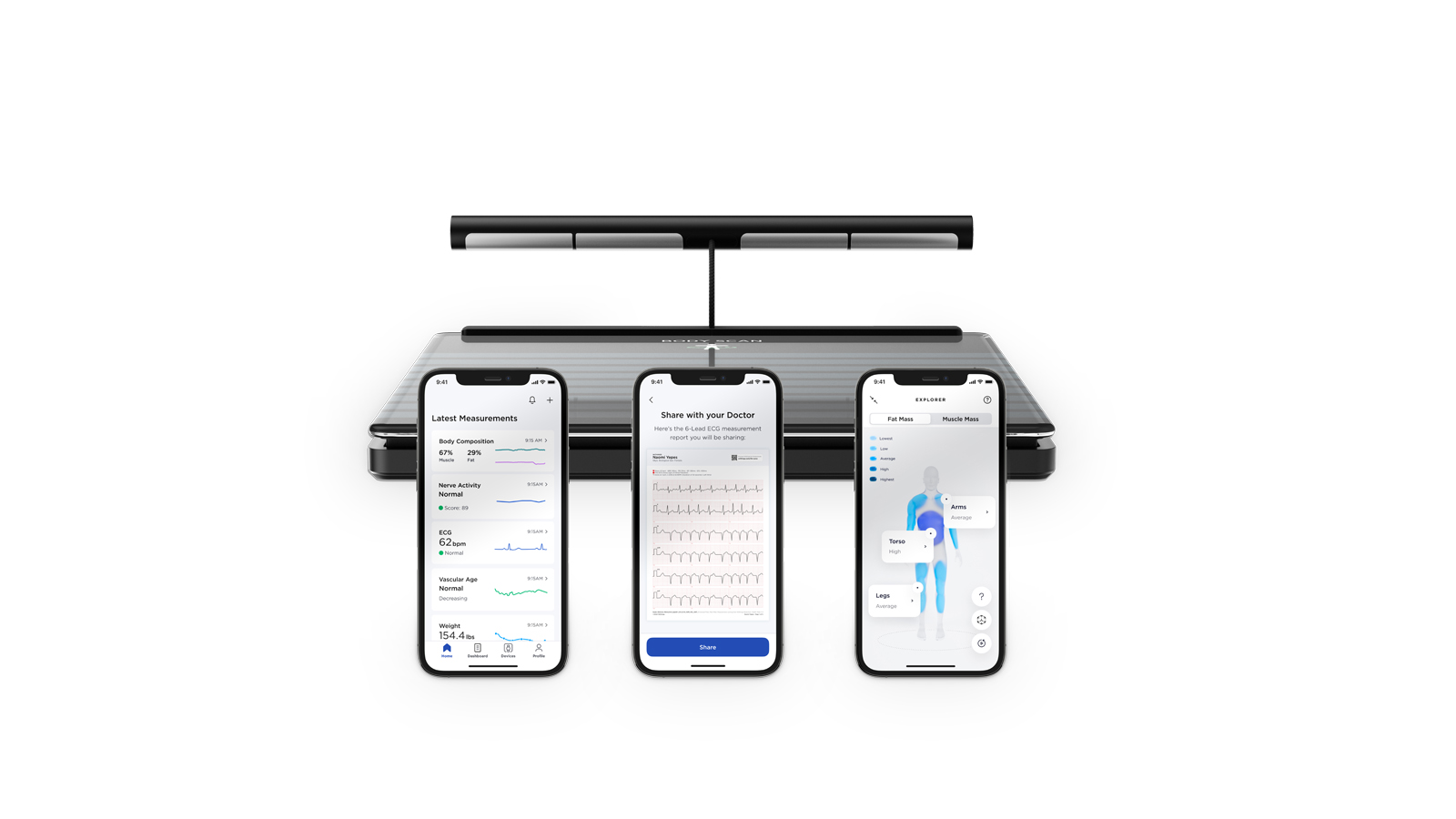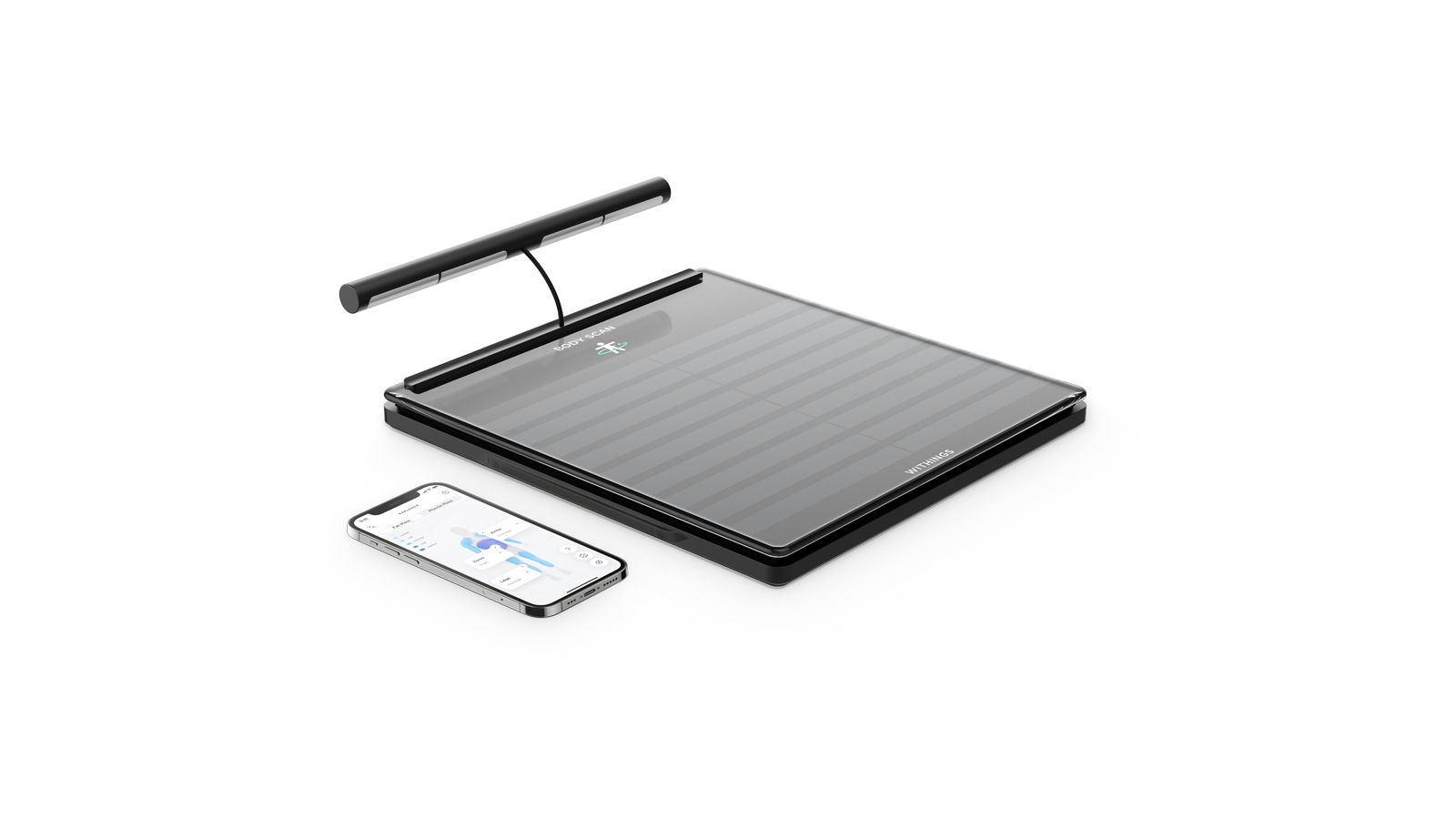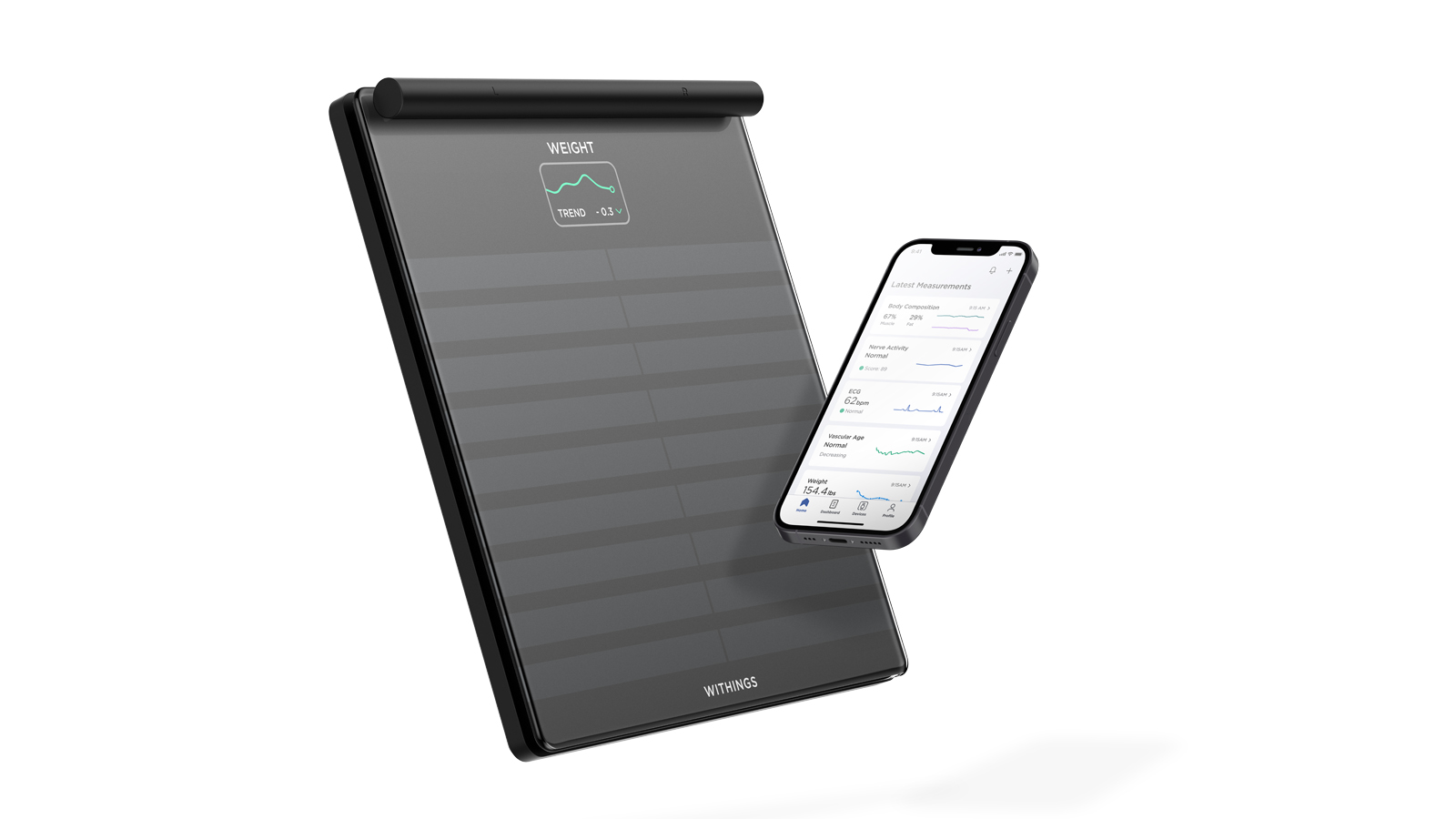New Withing smart scale can measure ECG, assess nerve activity and measure segmental body composition
The Withings Body Scan can measure a heap load of health metrics including vascular age and more


CES 2022 is well underway in Las Vegas, and just like every year, a lot of exciting consumer electronic products are being announced, such as the Withings Body Scan, a smart scale that measures way more than body fat and weight only.
With the ability to monitor segmental body composition, heart rate, and vascular age, the Withings Body Scan is definitely a more advanced smart bathroom scale than the Fitbit Aira Air (and more expensive, too).
With measurements that will assess nerve activity and heart rhythm using a 6-lead ECG, Body Scan goes beyond weight management to become an "in-home connected health station that can help users take proactive control over their health", as Withings says.
The Withings Body Scan consists of a single high-strength tempered glass platform encompassing a retractable handle. Body Scan contains four weight sensors and 14 ITO electrodes within the platform and four stainless steel electrodes in the handle for 6-lead ECG and segmental body composition analysis. It offers a year-long battery life and includes a larger high resolution 3.2" LCD colour screen that displays stats.
Withings Body Scan: Price and availability
The Withings Body Scan is expected to be available in the second half of 2022 following CE (in the EU) and FDA (in the US) clearance. It will be available in two colours, black and white. Body Scan will come with a three-month subscription to Withings health and wellness programs.
Price TBC.
For more info, visit Withings today.
Get all the latest news, reviews, deals and buying guides on gorgeous tech, home and active products from the T3 experts
Withings Body Scan: more than just a run of the mill smart scale
With electrodes placed in the base of the device and in the retractable handle, the Body Scan will use "multi-frequency Bioelectrical Impedance Analysis (BIA)" to measure overall body composition.
It can measure whole-body fat and water percentage, visceral fat, muscle and bone mass, and extracellular and intracellular water and provide readings for individual body parts, including the torso, arms, and legs.
To measure these, the device sends a very low-level electrical signal from the electrodes on the scale and within the handgrip. The analysis is then conducted by Withings’ algorithm that identifies resistance, known as impedance, to measure precise body composition in less than three seconds. The main features are:




Segmental Body Composition
As Withings explains, "segmental body composition allows the smallest changes in body composition to be identified and monitored over time." So instead of only checking the overall body composition, the Body Scan can identify fat mass distribution and inform users of potential health risks associated with localised fat findings, and spot muscle imbalances.
Nerve Activity Assessment
The Body Scan tracks sweat gland activity in the feet and provides a daily assessment of small nerve activity. The measurement is designed to be performed in under 30 seconds by applying a small direct current via the electrodes located in the plate. It will provide a reading via the Withings App.
Sweat is triggered by the small nerves that are innervating the sweat glands. This "sudomotor function" can be evaluated by measuring the ability of the feet sweat glands to release chloride ions in response to an electrical stimulus. An impaired sudomotor function can be a sign of reduced sweat gland innervation linked to a degeneration of small nerve fibres.
ECG and Vascular Age
Body Scan can record a 6-lead ECG to detect arrhythmias via two sets of electrodes located on each side of the handle and one within the base of the scale. The algorithm is designed to "detect heart patterns associated with atrial fibrillation", allowing results to be displayed directly on the device’s LCD screen and the accompanying app.
The Vascular Age feature will provide a daily assessment of arterial health and overall wellness by showing you how your cardiovascular health compares to the norms expected within their age bracket, using an estimate of their inner vascular age.

Matt Kollat is a journalist and content creator who works for T3.com and its magazine counterpart as an Active Editor. His areas of expertise include wearables, drones, fitness equipment, nutrition and outdoor gear. He joined T3 in 2019. His byline appears in several publications, including Techradar and Fit&Well, and more. Matt also collaborated with other content creators (e.g. Garage Gym Reviews) and judged many awards, such as the European Specialist Sports Nutrition Alliance's ESSNawards. When he isn't working out, running or cycling, you'll find him roaming the countryside and trying out new podcasting and content creation equipment.